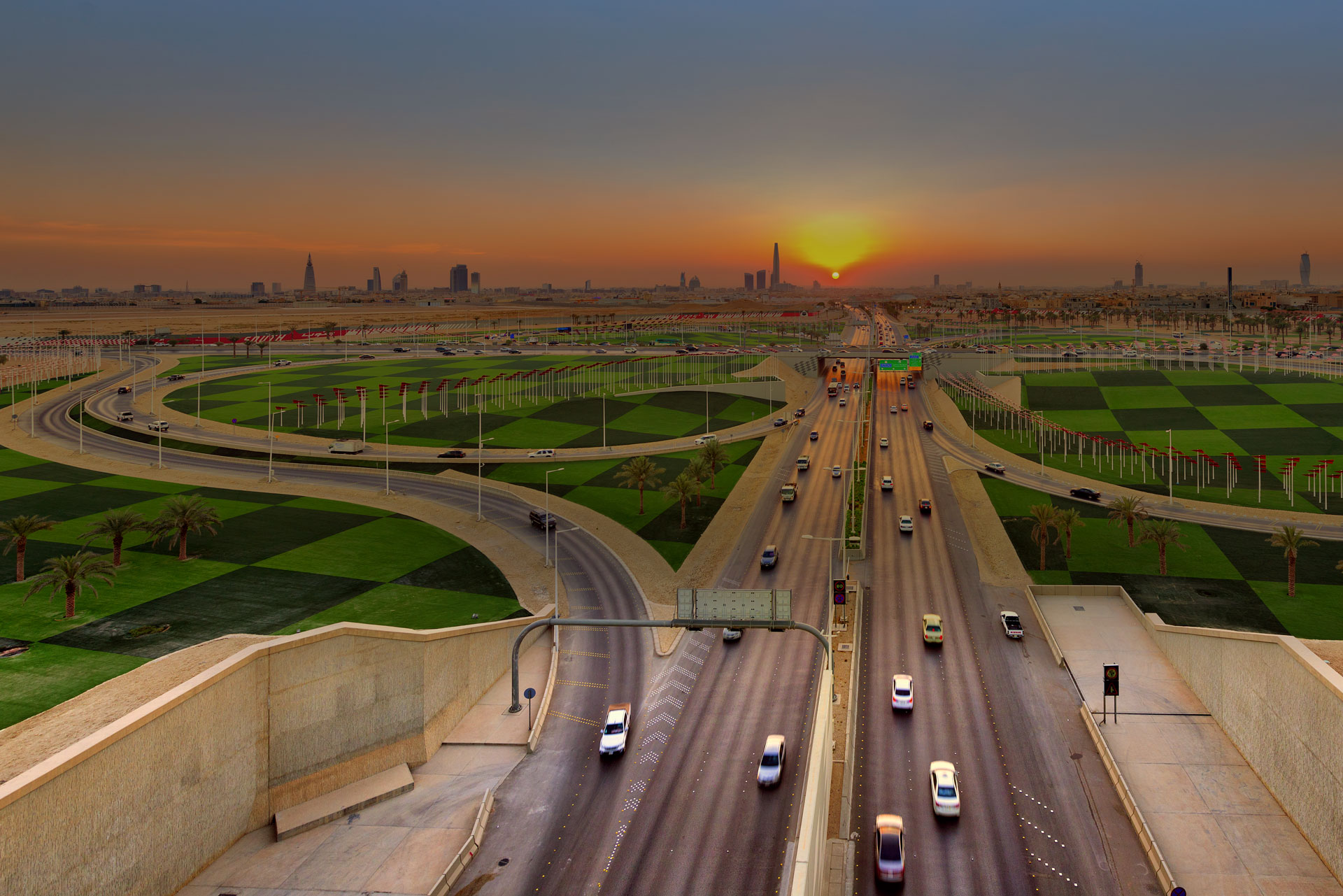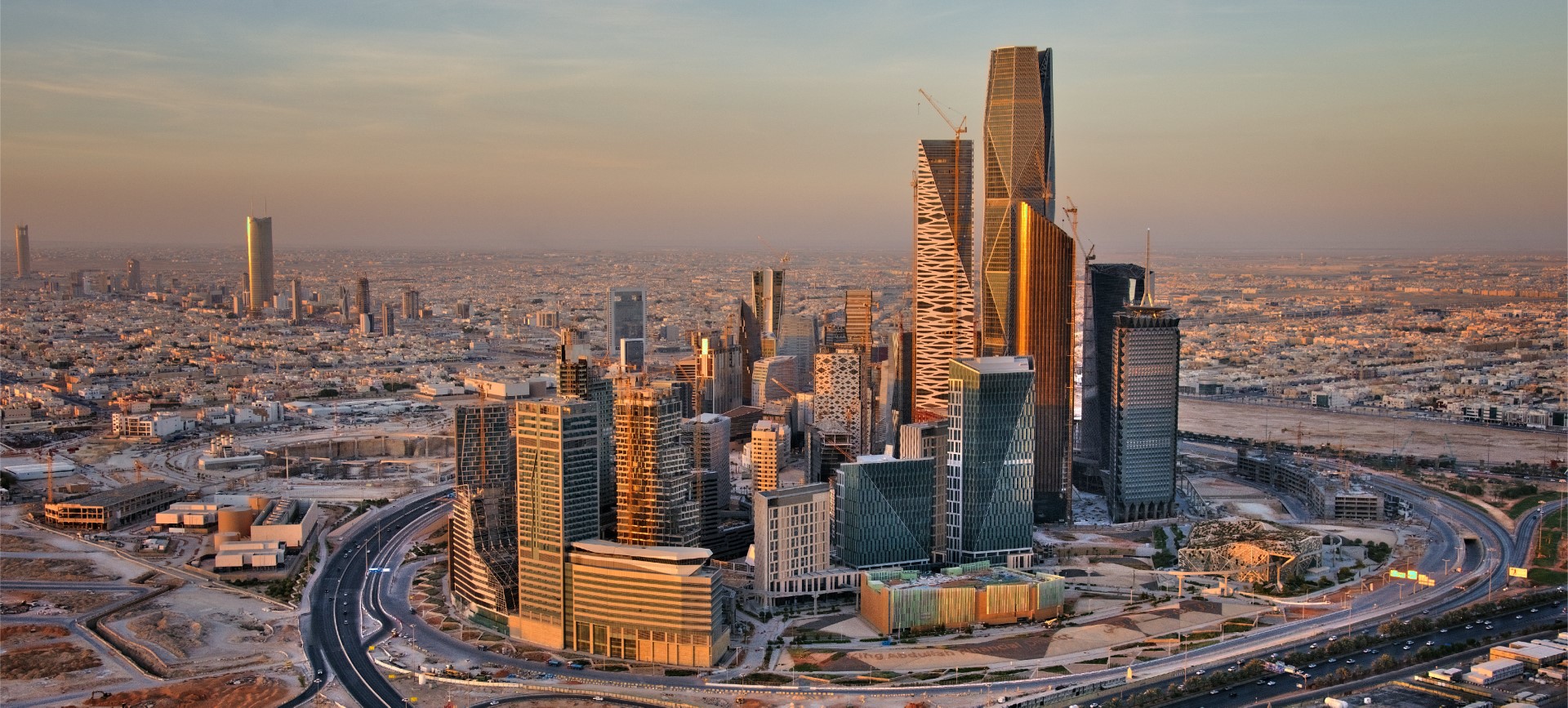
Saudi Arabia's economy has witnessed a growth in a large number of sectors, taking advantage of the natural resources in the Kingdom and its geographical and cultural position between three continents. This growth resulted in building a solid economic base, becoming one of the twenty largest global economies and an active member of the G20. Saudi Arabia is one of the main players in the global economy and global oil markets, supported by a strong financial system, an effective banking sector, and giant government companies based on highly qualified Saudi talents.
The Kingdom has witnessed economic and financial structural reforms which promote economic growth while preserving stability and financial sustainability. This is evident in the improvement of the business environment in the Kingdom, and the continuous endeavor to enable the private sector to support economic diversification and overcoming obstacles to make it more attractive to invest in previously untapped sectors.
In order to develop and diversify the economy and reduce dependence on oil, Saudi Arabia launched Vision 2030; built on several economic and financial reforms, which aim to transform the structure of the Saudi economy into a diversified and sustainable economy focused on enhancing productivity, increasing the contribution of the private sector, and empowering the third sector.
Since the launch of Vision 2030, Saudi Arabia has succeeded in implementing many initiatives and structural reforms to enable economic transformation. This transformation included several major efforts centered around enhancing local content, national industry, launching and developing promising economic sectors, and an enabling dimension aimed at maximizing the role of the private sector and SMEs, and enhancing the sustainability of public finances. These structural shifts have contributed to strengthening the Kingdom's economy and its ability to combat the COVID-19 pandemic in 2020. It is expected that the pace of this structural transformation will continue in the coming years, in light of a number of investment initiatives under the Public Investment Fund and leading companies. It is also expected that the localization of knowledge and innovative technologies will accelerate.
To drive the transformation, Saudi Arabia has implemented major key efforts, centered around:
Vision 2030 aims to enhance local content in various sectors, through localizing the production of goods and services to raise their competitiveness and create sustainable job opportunities. A number of initiatives were launched to increase the rate of localization and support national products as well as expanding the industrial base in the Kingdom to include the production of new products. A new government procurement system was also launched that stimulates local content, followed by the creation of Local Content and Government Procurement Authority, and a military industries company aimed to increase the rate of localization in the military sectors. Reforms of the customs system have been undertaken with the aim of increasing the attractiveness of national industries, stimulating job creation for citizens and, taking into account the competitive advantage of strategic sectors, launching programs to support and stimulate investment.
The Vision took the lead to advance non-oil exports and a number of initiatives were launched to enable Saudi companies to access global markets, including the development of strategic partnerships.. To enable export development, the Saudi Export-Import Bank (EXIM) was established to facilitate export financing and launch the General Authority for Foreign Trade to maximize the Kingdom's gain in foreign trade, enhance its competitiveness, and enable its access to foreign markets.

Vision 2030 supports promising sectors and seeks to develop them to be a new pillar of the economy, by setting the necessary policies and regulatory frameworks, and stimulating and facilitating investments.
In regard to the energy sector, Vision 2030 has expanded the renewable energy sector through a number of projects across the Kingdom, including the Sakaka renewable energy plant. In addition, the Kingdom continued to develop the oil and gas sectors, including increasing the production capacity of gas in the Kingdom.
The vision has worked to enhance the role of industrial cities to develop the mining sector, including the cities of Ras al-Khair and Waad Al-Shamal. The sector has been further enabled by launching a mining investment system and improving the infrastructure for logistics services and investments.
In the tourism and entertainment sector, Saudi Arabia aims to promote the development of tourist sites, facilitate procedures for issuing visas to visitors, and prepare and develop historical and heritage sites. To support the sector, the Tourism Development Fund was launched to finance it and enhance its growth, which will boost the pace of growth of tourism activity that the Kingdom witnessed before the pandemic crisis. The aim is to increase its contribution to economic growth and employment, as the travel balance turned into a surplus for the first time in 2019, and the spending gap between external and internal travel from 54 billion SAR flowed abroad in 2010 to a surplus of 4.8 billion SAR influx in 2019.
The Public Investment Fund (PIF) has recently approved its strategy for the next five years, through which it will work on many goals, the most important of which are: Injecting at least 150 billion SAR annually into the local economy on an increasing scale until 2025, and the PIF aims by the end of 2025 to exceed the volume of assets 4 trillion SAR, create 1.8 million jobs, directly and indirectly, and focus on 13 vital and strategic sectors.
The achievements made by PIF over the past four years include: almost tripling the size of assets to 1.5 trillion SAR by the end of 2020 and contributing to the activation of 10 new sectors that have created more than 365,000 direct and indirect jobs by the end of the fourth quarter of 2020.
In addition to this, Saudi Arabia launched the National Investment Strategy, driving the growth of domestic and foreign investments, in addition to attracting major international companies to open their headquarters in the Kingdom and to continuing progress in the privatization program to enhance the role of the private sector and raise productivity rates.
Vision 2030 aims to increase the private sector’s contribution to GDP and launched several initiatives to enable the private sector to increase its contribution. The features of transformation began to appear clearly in the business environment in Saudi, as the Kingdom's ranking improved in the annual global competitiveness report to reach eighth out of G20 countries in 2020, in addition, the Kingdom has launched the privatization system to provide the regulatory environment for the partnership between the public and private sectors, as well as several other regulations and legislations to improve the business environment and empower the private sector, which included implementing the bankruptcy system and facilitating foreign ownership.
Vision 2030 has facilitated the entry of new enterprises to the market, by facilitating financing for small and medium businesses and creating bold capital funds, which will lead to an increase in their contribution to GDP.
Vision 2030 has worked to expand funding sources for companies, develop the Saudi financial market, by launching the parallel market (Nomu Market), launching a derivative market, and joining global emerging market indices (FTSE Russell Index and MSCI Index).
In addition, Vision 2030 aims to improve the labor market policies in the Kingdom, by modernizing the labor system, launching flexible work arrangements (part-time), and improving the contractual relationship between companies and foreign workers in a way that increases the attractiveness of local competencies and raises the level of foreign workers.
The Kingdom also recently launched a large corporate investment program Shareek, which is a cooperative government framework that aims to launch up to 5 trillion SAR of private sector investment until 2030, as the program is designed to provide support across a number of pillars including financial, monetary, operational and regulatory cooperation and asset investment.

Vision 2030 has contributed to enhancing the sustainability of public finances by raising the efficiency of government spending on capital projects and operating expenditures, and in diversifying sources of income for the government, through developing non-oil revenues, and providing supportive financing tools to enable the Kingdom's general budget through the National Debt Management Center and raising efficient financial planning, budget execution, digital and technical transformation, and enhanced transparency.
Vision 2030 and its initiatives have also worked during the last period to lay the foundations for the economic transformation of the Kingdom. it is expected that in the coming years the Saudi economy will witness a remarkable increase in economic growth, as the Kingdom will continue to implement its major development projects and complete the implementation of Vision Realization Programs, and work to create new promising sectors, empower the private sector to contribute more to economic growth, creating new job opportunities for citizens and enhancing economic and social well-being.